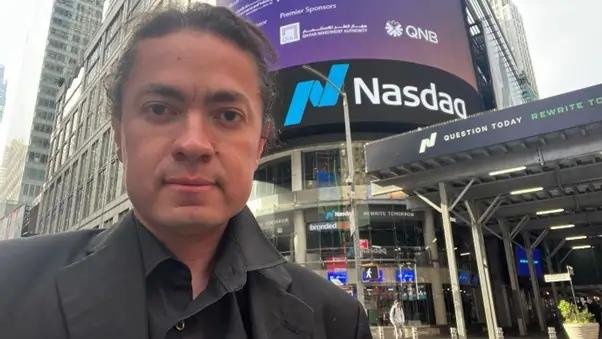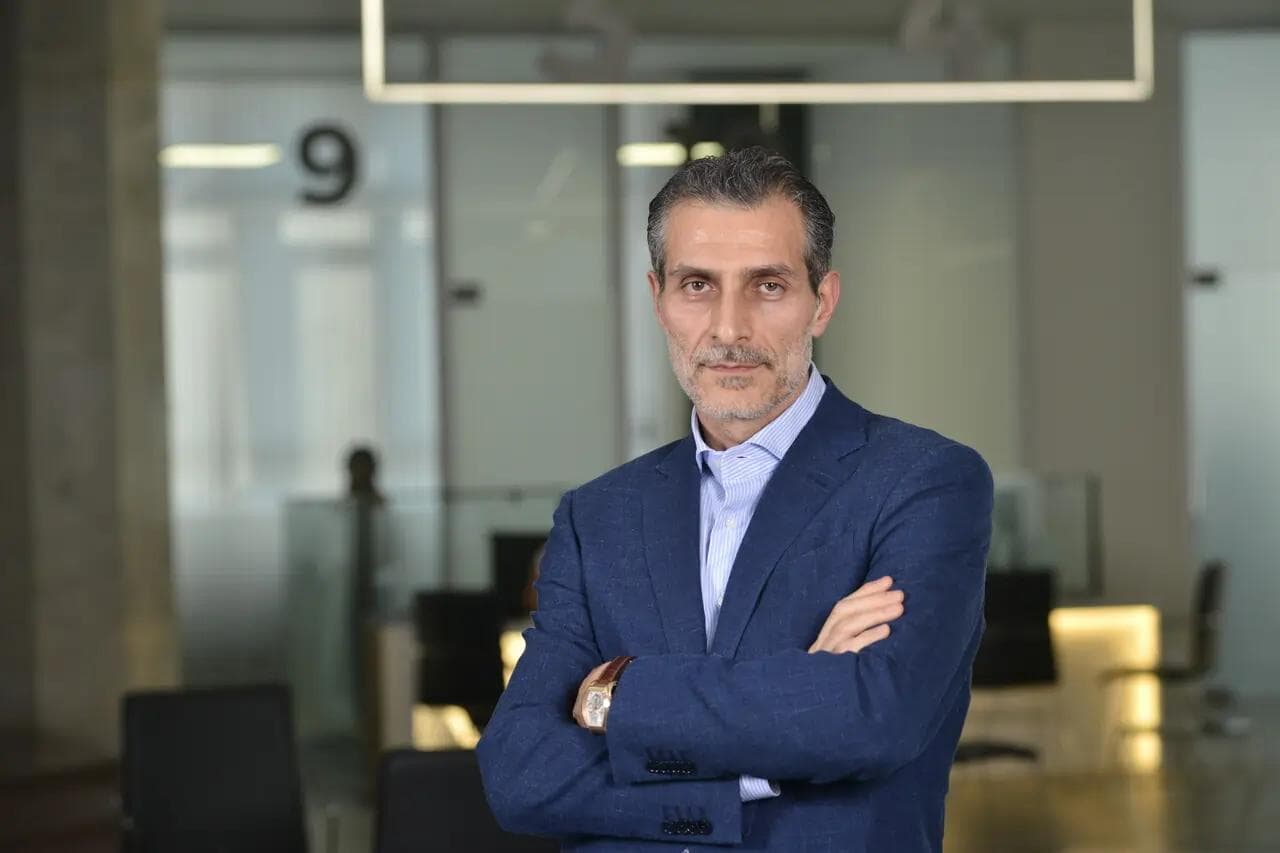Fabio Dias on Embracing Technology and Education to Obtain Better Investment Performance
Fabio Dias on Embracing Technology and Education to Obtain Better Investment Performance
Published by Jessica Weisman-Pitts
Posted on July 3, 2024

Published by Jessica Weisman-Pitts
Posted on July 3, 2024

Photo courtesy of Stalwart Holdings
07/03/2024
Headquartered in London, Stalwart Holdings is a vertical fintech company whose mission is to improve risk management and optimize long-term investment performance through its mathematical models and artificial intelligence (AI) implementation.
Fabio Dias, managing partner of Stalwart Holdings and lead instructor of financial modeling at the University of Surrey, answered a few questions about his company and his own values and behaviors.
Q: So, you are an educator and a fintech industry practitioner. Has it always been like that?
FD: I was born into a poor family in Brazil and had to start everything from zero. My first job was as a building assistant at 14 at the school where I was studying, which was going through some building work. I had to help my father with the rent. At night, at the end of the shift, I would go to the school’s library, which was closed, but I had the keys because I worked there.
On my own, I would read books about computer programming, which gave me my second job as a software developer at the age of 15. From that point onwards, I got used to studying and working at the same time, and I never stopped doing that, from secondary school all the way to the PhD. Now, at the age of 42, I am still doing this dual role, but this time, I am on the teacher’s side instead of the student’s.
Q: You said you came from a poor family in Brazil. How come you have invested one million pounds of your own money into Stalwart Holdings?
FD: Indeed, it was a very hard journey and required a lot of endurance and planning. But it was an interesting one. At the age of 22, I was already an expert in financial modeling. I was giving sporadic interviews to the specialized media in Brazil to talk about financial modeling topics and their relevance to institutional investors.
In 2005, I thought the prospects for the Brazilian economy were not too great, so I got an opportunity to move to Credit Suisse in London and work in their technology department. Then, I moved to risk management at Lloyds Banking Group, and finally, in 2020, I decided to open Stalwart Holdings. My banking career was rewarding, but as an insider, I saw many unethical practices in that field.
Q: Can you give us an example?
FD: Many times, the big banks would have assets that they believed to be toxic assets that they did not want to keep in their balance sheets. To get rid of these assets, they would create “investment opportunities” based on these assets and leverage their power with the distribution network to sell these “opportunities” to the general public, or they would have risks that they could not find a way to cover. Imagine some high exposure to changes in the equity volatility surface. Then, they create structured products that transfer this undesirable risk to the public and sell them as good investment opportunities.
Q: But according to your company’s website, Stalwart Holdings has issued ETNs and is selling them to the public. Is that not the same thing?
FD: Not at all. Exchange-traded notes, or ETNs, got bad press last year when Credit Suisse delisted the VelocityShares ETNs. However, the main reason was that they had a complex, illiquid product that was difficult to understand, which would not benefit any investor and would expose the investors to Credit Suisse’s credit risk, which proved to be very high.
Our ETNs are not similar to that. They are backed by bluechip, highly liquid stocks traded in the New York Stock Exchange, NASDAQ, and London Stock Exchange, which are ideal long-term investments. The exposure to Stalwart Holdings’ credit risk is minimal, given that our ETNs are fully collateralized and segregated from our main business legal entity via a special purpose vehicle.
Q: If you are building liquid portfolios with blue-chip components that anyone can buy, why would they buy your ETNs?
FD: Because the portfolio that backs our ETNs is actively managed. We have a very strong focus on risk management, and by using derivatives such as futures and options, we achieved 40% lower risk than the S&P500 if you measure the risk as the standard deviation of the daily returns. On a risk-adjusted basis, our returns are much better, as anyone can see from the chart that we make very public on our website.
Q: You just said “derivatives.” Why do you think this is safe for retail and pensions?
FD: Derivatives are not unsafe on their own, and many investment products designed for retail and pensions use derivatives to improve their risk profiles. Derivatives are like many medicinal products: if misused, they can become dangerous psychedelic drugs, but if used properly and only when required, they can substantially improve the well-being of their users.
Q: And how is that implemented?
FD: Using our internally developed mathematical models, we get the entire universe of stocks available for investment in the US and the UK, and we split them into four categories:
First, stocks that have momentum, which means very good recent performance and excellent track record of growth; second, stocks that are value-for-money, which means good balance sheet ratios from a fundamental analysis perspective, like price-to-book, price-earnings, etc.; third, stocks that are low volatility stocks, which means stocks that do not have big jumps in price daily; and fourth, stocks that do not fit in any of the three previous categories.
We do not invest in any of the fourth type stocks, and we mostly invest in stocks that satisfy the first, second, and third simultaneously. However, we may keep some stocks that only satisfy the first category if they are really good, as Nvidia has been. We then put a risk management overlay, which is again based on mathematical models and artificial intelligence, to determine the right time to use derivatives to hedge risk and the right amount to use.
Q: It still sounds difficult to understand. How will retail and pension investors want that?
FD: That is where my educator role comes into play. Our website is being updated with several informative blogs and videos to explain what we do and why joining our investment opportunity is a good idea. I need to have a good D2C platform to inform the customers about the good things about the new product offering. However, as for any new product that someone brings to the market, there is resistance first, and then after the resistance is overcome, if the product is good, the product becomes viral. Let me give you one example: there was a lot of resistance to Airbnb initially, and look how far they have gone.
Q: Some might consider it unrealistic to equate Airbnb with traditional investments, as the financial dynamics differ.
FD: The Airbnb comparison is not as off as it may sound. Money requires the investor to trust you—the same level of trust required to get a stranger into your house to sleep in the same house your children are sleeping in.
The market for Airbnb was everyone who had a spare room that they wanted to rent to a stranger for one night. In 2008, that market was almost non-existent. But then, when people understood that the product was not bad, the market became huge—the same thing with Stalwart Holdings ETNs. The market may look small now because people do not understand the product. But once they understand and like it, there is a £2.25 trillion market for retail investments in the UK and a $37.8 trillion market for pension investments in the US.
Q: Most people prefer to shop where they can access a wide range of products and manage everything in one place. Since you offer a specialized product, you might miss out on potential clients if this preference is not addressed.
FD: This is a very good point, and we have addressed it. We are already available for investment through a leading SIPP and SSAS platform in the UK, so if people want to hold their Stalwart Holdings investment in the same place as their other investments, they can use that platform. Moreover, given our experience adding our ETN to one platform, we are pretty sure we can add it to any other platform if there is client demand.
Q: Is Stalwart Holdings a fintech or a hedge fund?
FD: We are a fintech that developed a robo-advisory solution for investment management. Our flagship product is our ETN, which is listed on the Vienna Stock Exchange and competes with equity long-short hedge funds. We can also implement trade copying into separately managed accounts for larger investors who want to copy the portfolio of our ETN into their own accounts without having to buy the ETN. So, we are more than a hedge fund.
Q: What final advice do you want to share?
FD: Never give up if you have a vision and goal. There will be failures in the process, and you need to use these failures as learning opportunities. Refine your goals and methods and try again, doing one step at a time. But also, you must know where you want to go and clearly know the steps required to reach your destination. If you do not know this information, your first step should be ensuring you find it.
Explore more articles in the Investing category











